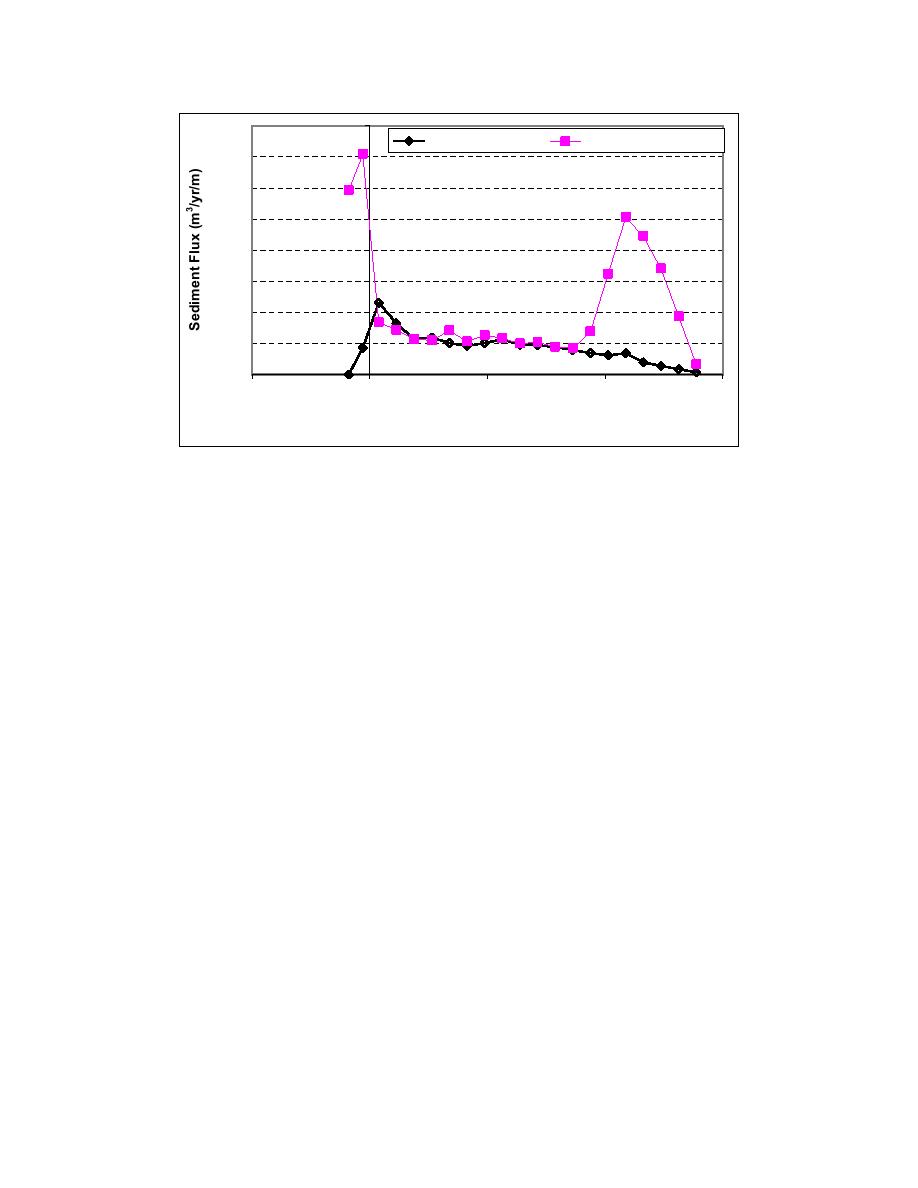
ERDC/CHL CHETN-II-46
March 2002
1600
Spilling breaker
Plunging breakers
1400
1200
1000
800
600
400
200
0
-5
0
5
10
15
Distance to shoreline (m)
Figure 3. Cross-shore distribution of LST for both spilling and plunging waves
For both cases, significant sediment transport was measured in the swash zone. For the spilling
case, about 27 percent of the total LST occurred in the narrow swash zone. For the plunging
case, about 34 percent of the total LST occurred in the swash zone. Visual observations during
the experiments indicated that the uprush was much more active during the long-period plunging
case than that during the spilling case. This is probably responsible for the much greater
sediment flux above the still-water shoreline. Active sediment transport in the swash zone was
also observed in several field studies (Kraus et al. 1982; Kraus and Dean 1987; Wang 1998).
A substantial peak in the longshore sediment transport distribution was measured in the vicinity
of the breaker line for the plunging breaker case. This peak is obviously related to the active
sediment suspension throughout the entire water column induced by the turbulent plunging-type
breaking. Measured sediment concentrations in the water column (at distances greater than 5 cm
off the bed) were an order of magnitude greater for the plunging breaker case. Nearly 35 percent
of the total longshore sediment transport occurred in the 3-m-wide breaker zone from 10 to 13 m.
Combined with the swash-zone peak, nearly 70 percent of the total LST occurred in the breaker
and swash zones. These two areas together occupied less than 40 percent of the total surf zone
width.
No transport peak was measured at the spilling breaker line. A gradual trend of increasing
sediment flux toward the shoreline was measured during this case. The cross-shore distribution
of LST was close to being linear. Cross-shore distributions in both cases were not uniform.
The similarity in LST rate in the inner surf zone (region between the swash zone and the
incipient breaker zone) for both the spilling and plunging wave cases is notable. In this region
the broken waves were surf bores with very similar wave heights. The measured mean longshore
current in this region was also similar for the two wave cases; in fact it was very similar across
the entire surf zone except near shore where the measured current was higher for the plunging
5


 Previous Page
Previous Page
